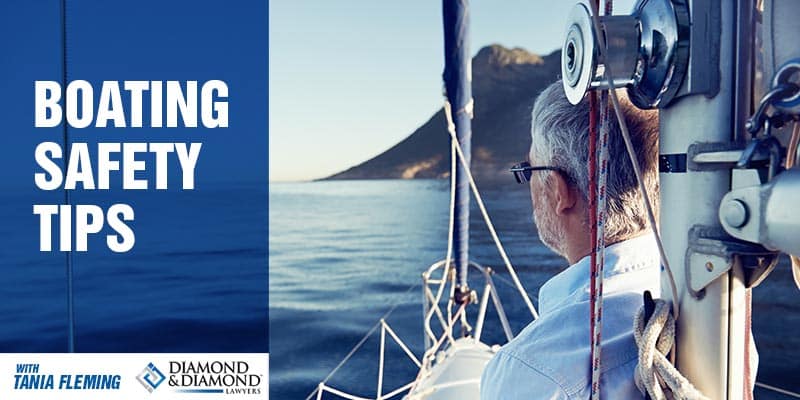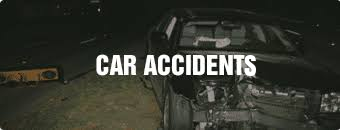- Our Firm
- Personal Injury
-
-
-
Personal Injury Lawyers
-
-
-
-
-
-
Injured in an accident? At Diamond & Diamond, our team of lawyers rely on their reputation in the field and extensive experience in personal injury to provide clients with a dedicated support system over the duration of their case.
-
-
-
-
-
HAVE YOU RECENTLY BEEN INJURED IN AN ACCIDENT?
-
-
-
- Corporate
- Class Action

Boating Safety Tips
We don’t often discuss boating accidents. They simply don’t happen as frequently as car accidents. However, we are now coming into cottage weather and that means more boats and boaters on our lakes and rivers.
What is puzzling is people tend to be less cautious in boats. We feel safer for some reason on the water. That may be due to a false sense of security because you are a good swimmer. People get fast and loose with regulations that seem obvious in a car, such as drinking and driving.
Drunk driving causes the majority of boating accidents. Drinking slows your reaction time, makes you dizzy and less equipped to deal with potential dangers. Driving a boat is not easier or less complicated than a car, so you need to be equally alert. Make sure you do not drive your boat drunk or tipsy.
You want to ensure your boat has proper lighting. I was involved in a case years ago where the two boats didn’t see each other. This led to devastating consequences.
Wear your lifejacket. Even if you are a great swimmer, if you are knocked out or fuzzy you may not be able to get yourself safely to shore. Lifejackets are mandatory like seatbelts for a reason. Carry all safety gear with you in case of an emergency.
Take it easy as well. Do not stay out in the blazing sun for hours and hours. Take a break – come in from the sun and rehydrate. You do not want to be lethargic in the face of a dangerous situation.
Be safe, have fun and enjoy your long weekend!
FAQ’s:
What should I include in a boat safety kit?
Whenever preparing a safety/ emergency kit, you must ensure that these things are included: flashlight, duct tape, bucket, first aid kit, whistle, ropes, mirror, garbage bags, fire extinguisher, and life jackets. These things can be used whenever there are leaks, you’re lost, or when you have to call for attention.
Should I be worried about fumes?
Yes, you should be worried about fumes in your boat. One of the fumes that you should be worried about is carbon monoxide. This gas can accumulate in and around your boat and unexpectedly knock you or your guests unconscious. Carbon monoxide usually accumulates in places that include enclosed spaces, blocked exhaust outlets, and inadequately ventilated canvas enclosures.
What is the proper anchoring procedure?
To ensure that the wind won’t drag your boat, you must drop two anchors in a V-formation at the front of the craft to keep it from drifting away. To prevent the tide from lifting your anchor, you must drop it in deeper water (about 20 to 30 feet).
Need a Lawyer?
We are here 24/7 to address your case. You can speak with a lawyer to request a consultation.
1-800-567-HURTGet started with a free consultation
OUR TEAM
- Ishmeet Sandhu
- Nolan Bachmann
- Annamarie Demaj
- Jeffrey Hum
- Tofunmi Adeyeye
- Alessia De Gasperis
- Amandeep Chawla
- Jeremy Tsoi
- Kimiya Razin
- Shir Zisckind
- Gray Sinden
- Shelly Bard
- Christian Brown
- Daly Canie
- Tanveer Sohal
- Prianka Virdi
- Noah Brownstone
- Justin Kaminker
- Harinder S. Bhatti
- Craig Yargeau
- Kiran Birk
- Amit Singh
- Andrei Teju
- Maria Zahid
- Matthew Douglas
- Jacob Elyk
- Harry Gill
- Kristina Olivo
- Egi Bano
- Cam Woolley
- Charles Thompson
- Alexandra McCallum
- John Sime
- Allan Cocunato
- Patrick Poupore
- Erika Henderson
- Marina Korshunova
- Brandon Handelman
- Regeena Alapat
- Ryna Kim
- Natalia Poliakova
- Isaac Zisckind
- Manpreet Bhogal
- Mathura Santhirasegaram
- Nikolai Singh
- Sandra Zisckind
- Jeremy Diamond
- Michael Blois
- Darryl Singer
- Nadia Condotta
- Tinashe Madzingo
- Megan Armstrong
- Veronica D’Angelo
- Corey J. Sax
- Scott Tottle
- Steven Wilder
- TJ Gogna
- Jillian Carrington
- Joshua Himel
- Simon Diamond
- Cory Rubin
- Simon Mariani
- Brandon Greenwood
- Basil Bansal
- Nastassia Ivanova
- Tania Fleming
- George Laloshi
- Patrycja Majchrowicz
- Diana Iakossavas
- Dior Africa
- Alex Ragozzino
- Liana Saccucci
- Richard J. Chang
Head Offices
Main Offices
Barrie
Main Office
168 Bayfield Street
Calgary
Main Office
1331 Macleod Trail SE, Suite 645
Edmonton
Head Office
4246 97 Street NW, Unit 103
Halifax
Consultation Office
1701 Hollis St
London
Main Office
256 Pall Mall St, Suite 102
Oshawa
Consultation Office
50 Richmond Street E, Unit # 108 B
Ottawa
Main Office
955 Green Valley Crescent, Unit 315
Sudbury
Main Office
31 Larch Street, Unit 300
Timmins
Main Office
120 Cedar Street South, Unit 002A
Toronto
Head Office
255 Consumers Road, 5th Floor
Vancouver
Head Office
1727 West Broadway, Suite 400
Windsor
Main Office
13158 Tecumseh Rd. E. Unit 3B
Additional Areas Served
Ontario
- Ajax
- Alberta
- Aurora
- Barrie
- Belleville
- Bowmanville
- Brampton
- Brantford
- Brockville
- Bracebridge
- Bradford
- Burlington
- Burnaby
- Calgary
- Chatham
- Cobourg
- Collingwood
- Cornwall
- Durham
- Edmonton
- Elliot Lake
- Etobicoke
- Georgetown
- Guelph
- Hamilton
- Huntsville
- Kanata
- Kelowna
- Kingston
- Kitchener
- Leamington
- London
- Markham
- Milton
- Mississauga
- Muskoka
- Niagara Falls
- Newcastle
- Newmarket
- North Bay
- North York
- Oakville
- Orangeville
- Orillia
- Oshawa
- Ottawa
- Owen Sound
- Parry Sound
- Perth
- Peterborough
- Pickering
- Prince Edward County
- Richmond
- Richmond Hill
- Sault Ste Marie
- Sarnia
- Scarborough
- St. Catharines
- St. Thomas
- Stouffville
- Sudbury
- Surrey
- Thunder Bay
- Timmins
- Toronto
- Uxbridge
- Vancouver
- Wallaceburg
- Waterloo
- Welland
- Whitby
- Windsor
- Woodstock













